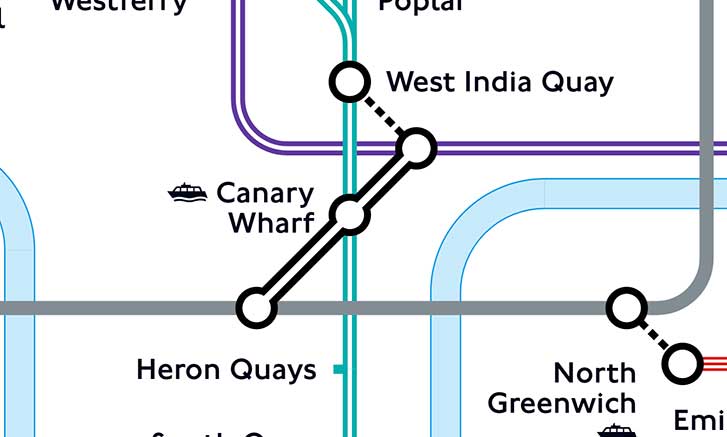
After a three-year delay, the Elizabeth Line (formerly known as Crossrail) is finally open. And with sleek new trains, smart carriage interiors, commissioned artwork at stations and fast travel times, we think it was well worth the wait.
Futuristic design
The Elizabeth line is a feat of cutting-edge technology and design. There are 41 new and improved stations across the 60-mile-long route, including Paddington Station, which is so big that according to Crossrail’s CEO Mark Wild, could accommodate the Shard, London's tallest skyscraper, if it was laid flat. Accessibility is key too and all Elizabeth Line stations are step free from street to platform. (Ilford is the exception but should be step free in the next couple of months.)
The carriages, built by Bombardier Transportation (now Alstom) in Derby, are sleek, spacious and airy and at around 200 metres long are 1.5 times longer than a Tube train. Each nine-coach train carries 1500 travellers and Wi-Fi and 4G are available throughout.
Cultural experience
The Elizabeth Line continues the long tradition of art on the Underground and gives each station an identity. A Cloud Index by Spencer Finch, is a stunning 120-metre-long roof canopy depicting clouds which gaze down at commuters coming down the escalators at Paddington. Avalanche by Simon Periton, at Farringdon station, is a beautiful frieze of large diamonds. While Chantal Joffe’s series of two-metre collages at Whitechapel depicts local East End people.
Fast connectivity
The number of trains, and the improved connections between stations across the Capital and beyond, means shorter and easier journeys for locals and visitors.
The central section (bar Bond Street which will open later in 2022), is now open, with trains running every five minutes between Paddington and Abbey Wood, from 6am to 11pm, Monday to Saturday.
When all sections of the line are connected by May 2023, customers will be able to travel from Abbey Wood to Heathrow and Reading, and from Shenfield to Heathrow, with 24 trains an hour running at the busiest times between Paddington and Whitechapel.
The ease with which commuters can now reach main central stations, such as Paddington and Liverpool Street, will encourage people outside the Capital to travel in for work. It’s thought that an additional 1.5m people will now be within a 45-minute commute of London’s major commercial centres, including the West End, the City and Canary Wharf.
Time saving
For most travellers on London’s newest line, it’s all about how much time can be saved on the daily commute or night out. Whitechapel to Paddington now takes just 14 minutes on the Elizabeth Line. The same journey on the notoriously unreliable Hammersmith and City line takes 23 minutes. While Ealing Broadway to Tottenham Court Road will be just 13 minutes when it’s all connected in the autumn, rather than a hefty 32 minutes via the Central line. And Paddington to Canary Wharf, which used to be a 32-minute journey via the Jubilee and Bakerloo lines, now takes a speedy and stress-free 18 minutes.
Big boost for Canary Wharf
And it’s Canary Wharf that’s going to be one of the biggest beneficiaries of the new Elizabeth Line, according to Shobi Khan, the chief executive of the Canary Wharf Group. He describes the 39-minute direct link from Heathrow Airport to Canary Wharf, when it’s completed next year, as a “game changer” that makes the area an even more attractive place for businesses to locate. The six-storey building that houses the new Canary Wharf Elizabeth Line station, is just a short walk from the Tube Station and includes a roof terrace, as well as numerous shops and a cinema. The new Elizabeth line “will help people to come to Canary Wharf and experience all the amenities that we offer,” adds Khan.


